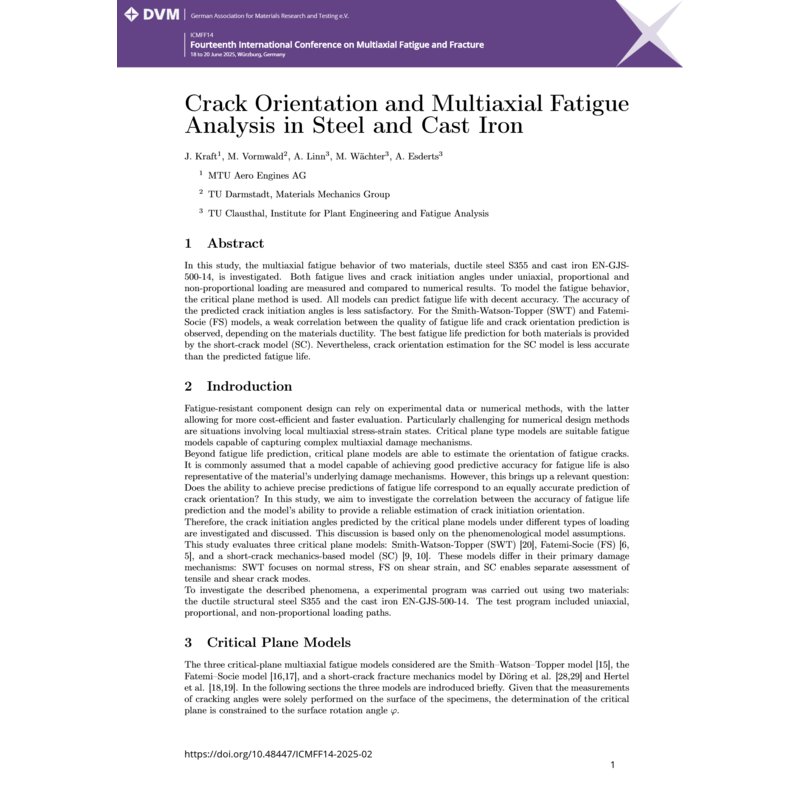- Online only



In this study, the multiaxial fatigue behavior of two materials, ductile steel S355 and cast iron EN-GJS-500-14, is investigated. Both fatigue lives and crack initiation angles are measured and compared to numerical results. To model the fatigue behavior, the critical plane method is used. All models can predict fatigue life with decent accuracy. The accuracy of the predicted crack initiation angles is less satisfactory. For the Smith-Watson-Topper (SWT) and Fatemi-Socie (FS) models, a weak correlation between the quality of fatigue life and crack orientation prediction is observed, depending on the materials ductility. The best fatigue life prediction for both materials is provided by the short-crack model (SC). Nevertheless, crack orientation estimation for the SC model is less…

Datenschutzbedingungen (bearbeiten im Modul "Kundenvorteile")

Lieferbedingungen (bearbeiten im Modul "Kundenvorteile")

Rücksendebedingungen (bearbeiten im Modul "Kundenvorteile")
In this study, the multiaxial fatigue behavior of two materials, ductile steel S355 and cast iron EN-GJS-500-14, is investigated. Both fatigue lives and crack initiation angles are measured and compared to numerical results. To model the fatigue behavior, the critical plane method is used. All models can predict fatigue life with decent accuracy. The accuracy of the predicted crack initiation angles is less satisfactory. For the Smith-Watson-Topper (SWT) and Fatemi-Socie (FS) models, a weak correlation between the quality of fatigue life and crack orientation prediction is observed, depending on the materials ductility. The best fatigue life prediction for both materials is provided by the short-crack model (SC). Nevertheless, crack orientation estimation for the SC model is less accurate than the predicted fatigue life.